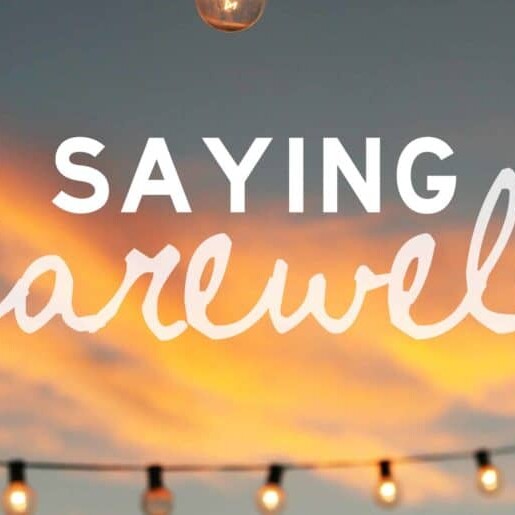
“I am a nervous wreck, I am way behind on my fundraising, my staff is not getting along, I don’t know how to support them, I lost a major donor, and I feel so alone,” said Aron, an Executive Director of a nonprofit, a few months into COVID.
After almost eight months of the pandemic, leaders like Aron continue to face shifting contexts and ongoing stresses as they try to move into the new normal. Never before have leaders of Jewish organizations had to address questions like making working spaces safe from COVID and working entirely virtually. It’s lonely at the top anyway, but facing challenges further isolates leaders. “I must be the only one to experience this,” they think and therefore hesitate to share struggles with others, who could help. At this juncture in our communal lives, and as the Jewish Federations of North America 2020 General Assembly convenes virtually this week, we see professional networks are critically important to support leaders.
As Bill Gates writes, when tackling a big challenge he begins by asking, “who has dealt with this problem well? And what can we learn from them?” As guides and facilitators to groups of leaders – Ziva organizes leadership development cohorts and Naava guides Communities of Practice – we see the power of networks for leaders in both the Jewish and non-Jewish sectors. Peer support offers leaders practical insights as well as inspiration and hope, through seeing the successes, failures, and resilience of others. Therefore, a combination of peer community and access to an ongoing flow of information and solutions provides leaders with what they need to face the dynamic and ongoing challenges that COVID presents. Aron, for example, had a network but he had not used them much before. They had monthly webinars that provide interesting case studies. But that’s about it. And, while it’s tempting to hope that information is enough to address leaders’ needs, there are a few key pitfalls in that approach.
Overcoming the Challenges of Stress and Isolation
We are learning from new market research by the Schusterman and Jim Joseph Foundations that the key to successful virtual events for young Jewish adults is to provide community and connection before content. We argue that for leaders and other professionals, a similar approach applies.
So much of today’s pandemic challenges are outside of leaders’ lived experience, with a learning curve compounded by a paucity of best practices and continually changing guidelines. Supporting leaders must begin by attending to the human, the need for connection, and the emotional needs of leaders. Attending to the emotional is not a touchy-feely aspiration; stress is real and has a physiological basis. Stress causes the body to release cortisol, which inhibits the brain’s ability to proliferate dendrites and create new circuits. In other words, stress inhibits the brain’s ability to learn. So, to unlock learning, begin by addressing the human elements.
Research on professional learning shows the most powerful professional learning occurs in the context of work itself and solutions come from ongoing access to and informal conversations with peers. Only a peer understands the depth of what it means to stand in those shoes and has the shared language to describe it. Being able to reach out to the right person at the right time can be invaluable. In our experience, leaders are expressing a hunger to speak with each other about how they are handling COVID related challenges. And, thanks to Zoom, Teams, Meet, and more, we have unprecedented opportunities to bring people together.
By bringing people together, we give Aron a space where he feels understood, sees others dealing with similar challenges. His stress levels drop, unlocking his capacity to learn. But from whom? There are no experts on leadership in times of a pandemic. Aron and his peers need to co-create their knowledge together, writing the playbook themselves. Our own experience shows – and research validates – that participants in a well-facilitated networked model of learning can – in close to real-time – identify emerging challenges, deal with complexity, learn from experiments, share resources, create and spread innovation, and move a field forward.
Following, are a few success stories about ways the pandemic is providing new opportunities for organizations and individuals to find peers. We also share tips about how gathering differently can create stronger outcomes.
Find Your People
Example: Prizmah: Center for Jewish Day Schools
When COVID hit, Jewish day school professionals serving in nine different roles – ranging from Jewish studies teachers to school counselors – reached out to Prizmah, the network for Jewish day schools across North America, to support them in convening. Prizmah used their existing infrastructure to form these new online communities, including professionals they had not previously convened, like the gym teachers who were suddenly faced with offering online gym class.
As an organization dedicated to connecting people with peers, experts, and resources, Prizmah already had monthly facilitated peer-to-peer gatherings for heads of school from across North America. At the start of COVID, heads of school requested more frequent time together and shifted to meeting weekly to get the support they needed. The nine new online communities found support through Prizmah, who had the infrastructure and staff in place to transition immediately to gathering more often with more groups. By listening to network members and building on their network of resources, Prizmah was able to serve a timely and critical need.
Networks are a Long Term Strategy
As illustrated by Prizmah, networks are a long term sustainable strategy. As Debra Shaffer Seeman, Prizmah’s Director of Network Weaving describes, “Investing in relationships makes all the difference. During periods when time is of the essence, pre-existing relationships allow for open sharing, trusted feedback, and quick input without the need for formal introductions or starting from scratch. Once a trusting relationship is formed, it is there to be easily activated when the necessity arises.”
Gather Differently
Once you have found your people, we believe the realities of COVID require thinking differently about gathering. The goals of gathering in many professional development contexts have been focused on knowledge transfer, bringing in guest experts, or sharing case studies. We argue that during COVID, professional gatherings should provide space and opportunities for social and emotional support as well as stimulating learning and we provide an illustration and resources below. In addition, with the right facilitation and convening strategies, we see significant upside potential to stimulate innovation and catalyze collective impact.
We understand there is significant resistance to group time and energy focused on the ‘touchy-feely stuff’ of relationship building. Yet, profound learning occurs when professionals feel safe enough to ask questions, reveal their vulnerabilities, and explore what they do not know. Gathering differently means balancing a group’s intellectual growth with growing the relational underpinnings and trust that support network members.
Example: New England Hemophilia Association (NEHA)
Before COVID, NEHA had run in-person sessions for members with a format of the guest expert followed by Q & A. With the start of COVID, Sarah Shinkman, NEHA’s Program Director, realized there was a need for something more and started experimenting with Zoom breakout rooms. Sarah explained, “Breakouts in Zoom let attendees see each other, see facial expressions, and have stronger connections. The discussion becomes more meaningful, intentional, people are inclined to share more about their experience because they feel the energy, emotions, and connections from each other. It allows people to be more vulnerable.” Sarah’s insight and responsiveness increased her members’ learning, as well as their confidence in the support offered by the network.
Gathering Differently Requires Excellent Design and Facilitation
Excellent facilitation is essential for a strong network. Unlike a hierarchy that has a clear chain of command, we believe partnering with a network is best accomplished through facilitation. A facilitative stance allows the creativity and out of the box thinking of a group to emerge.
We recommend conveners build their facilitative muscles by undergoing training and watching master facilitators at work to continuously expand their repertoires. In the example above, COVID motivated a simple tweak in gathering – breakout rooms – that enabled more sparks of connection and intimacy, enriching and deepening network connections thereby creating social and emotional support for participants.
TIP: We recommend systematically using breakout rooms after a presentation to help participants synthesize what they heard, hear other perspectives on the topic, and think about how to apply what they learned to their own experience.
Resources for Gathering Differently
The new zoom client, released in late September, has an option that allows attendees to move across breakout rooms on their own creating many new and exciting formats ranging from a virtual cocktail party (Rae Ringel) to Open Space.
Other resources we have found to be useful in gathering differently include:
- Troika Consulting from Liberating Structures – In quick round-robin “consultations,” individuals ask for help and get advice immediately from two others via peer-to-peer coaching triads. The virtual hack is to turn off your video instead of turning your chair around (Tanja Sarett). [ap_spacing spacing_height=”10px”]
- Upstart’s Guide to Facilitating in the Virtual World is a comprehensive guide focused on tools for meetings of 30 people or less. [ap_spacing spacing_height=”10px”]
- Using Jamboard for Network Mapping by June Holley uses Google’s virtual post-it note board, to help members get to know each other and find their common interests. [ap_spacing spacing_height=”10px”]
- Virtual Gathering In The Time Of Corona, Priya Parker’s introduction to virtual gathering, includes creative ideas for simulating pre-event mingling with Zoom meetings and other basic concepts. [ap_spacing spacing_height=”10px”]
- Engaging People with Lived Experience Toolkit and Facilitating Meetings with People with Lived Experience of Inequity from 100 Million Healthier Lives, hosted by Community Commons. This toolkit aims to create flexible, deeply collaborative strategies for a diverse group, enabling a plurality of voices to be heard and contribute.
Conclusion
This is a time that calls for learning together. After speaking with Naava, Aron reached out to his umbrella organization and reached out to his peer network. When we last spoke with Aron, instead of feeling overwhelmed and isolated, he felt supported, engaging with his network (and other supports) and knowing that his network was there for him.
* Aron’s name has been changed to protect his privacy.
Do you have a story of gathering differently in the pandemic? Learning differently? We want to hear it!
originally published at ejewishphilanthropy.com
About the Authors
Naava Frank ([email protected]) is Institutional Giving Manager at Honeymoon Israel and leads the Network of Network Leaders – an initiative founded by Cyd Weissman of Reconstructionist Rabbinical College that brings network facilitators together for support and to learn from each other. As Director of Naava Frank LLC/Knowledge Communities, Naava has devoted her career to enabling nonprofit organizations to maximize the outcomes of Communities of Practice. Naava lives in Riverdale, the Bronx, New York.
Ziva Mann is the Director of Learning and Development at Ascent Leadership Networks, where she helps leaders understand their capabilities, and guides development for individuals and organizations. Ziva is also faculty at the Institute for Healthcare Improvement for the 100 Million Healthier Lives initiative (100mlives.org), working with a network of change leaders to improve equity, health, and wellbeing. She is also the director of ZMM Consulting, LLC. Ziva lives in Massachusetts with her husband and sons.
Related Posts
September 24, 2025
Thank you & Farewell
November 4, 2024



